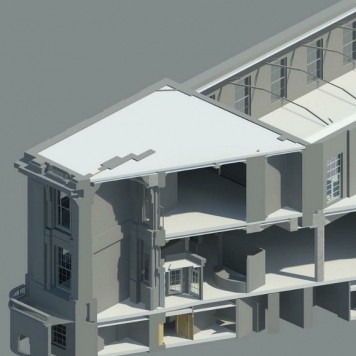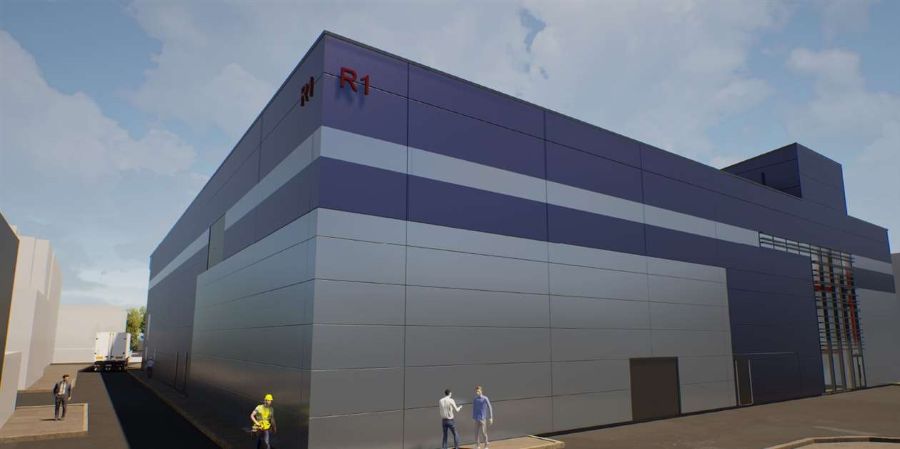
The Government continues to be driving the industry’s adoption of Building Information Modelling (BIM) according to this year’s NBS National BIM Survey.
This is the fifth year that the survey has been published, tracking attitudes to and adoption of BIM; the collaborative process of working that is at the heart of the Government’s drive to reduce costs, time and carbon emissions and position the UK construction industry as a global leader against a backdrop of rapid international growth.
More than 80% of respondents to this year’s survey believe that BIM in some form will be compulsory on public sector projects and 70% feel that the Government will mandate BIM in the way specified in the construction strategy document, namely 3D collaborative BIM, also known as ‘Level 2’.
Encouragingly for the Government and its UK BIM Task Group, the majority believe that it is “on the right track” with BIM, but only a quarter believe that the UK is a world leader, with a further 45% ambivalent.
With regards to the specific targets, a majority of those surveyed believe that BIM will help reduce both costs and time, whilst 41% see it as a tool to aid a reduction in carbon emissions.
David Philp, the Head of BIM for the UK BIM Task Group commented: “The survey results are hugely encouraging for all of us at the UK BIM Task Group. It’s immensely heartening to know that a majority of the industry feels that the Government is on the right track with BIM.
“A digitised and integrated built environment is the future of our industry and increasing numbers of people are recognising this. We must continue to make it clear that BIM, and associated technologies that enable and support collaborative working, are of benefit to everyone, not just to central Government. We’re very optimistic that the industry itself is in a great position to carry BIM forward towards a Digital Built Britain.”
Awareness of BIM remains almost universal at 95% and the same proportion envisaging usage within five years. Figures regarding adoption are more complicated with a slight fall - from 54% to 48% - being recorded. One possible reason for this is that adoption is simply following the standard lifecycle, awaiting the ‘Late Majority’ to follow on from the Early Adopters, the Innovators and the Early Majority.
Cost and lack of expertise and training remain major barriers to BIM adoption, and, as the economy improves and workloads pick up, around half of those surveyed cite a lack of time to get up to speed.
Perhaps most interestingly, almost two-thirds (63%) of participants said that lack of client demand is the main reason for not adopting BIM. This raises the question of how something that is mandated by central Government and is likely to spread quickly throughout the public sector can penetrate the consciousness of private sector clients.
A significant minority (43%) claim that the projects they work on are too small, suggesting a continuing belief that BIM is for large scale projects.
The benefits of BIM are, however, clear to those who have adopted. Fifty nine percent see cost efficiencies, 56% an improvement in client outcomes, 51% an increase in the speed of delivery and 48% an increase in profitability. According to those who have adopted BIM, there is, in fact, a real and growing market for it and a belief that clients and contractors will increasingly insist on it.
This makes for a strong endorsement of BIM from the community of users; a more efficient and more profitable way of working that better meets the demands of a growing market. Predictably, the non-users are uniformly less positive what they expect to achieve. The questions for the future is how quickly – or indeed whether - this group will embrace BIM.
Commenting on this year’s survey Adrian Malleson, Head of Research, Analysis & Forecasting at NBS, said: “This has been one of the more interesting sets of findings of our National BIM survey. Previously we have seen year on year growth in adoption, but this year, shortly before the Government mandate comes into force, we see a pause in BIM adoption.
"There remains a significant number of practices that do not see the advantages of BIM and chose not to adopt and others that are currently unable to adopt BIM, because of time, cost, or expertise. However, the direction of travel remains clear – BIM will increasingly become the norm for the design and maintenance of buildings, and its widespread use is central to achieving the Government’s construction strategy.
“There is more going on here than an adoption of a particular set of technologies, standards and working practices to support an improved process for construction. Data collection, aggregation, and interrogation, through collaborative working, is driving fundamental changes in how people work, across all sectors. It allows rapid learning, and increasingly sophisticated ways to form, test, and act upon evidence based hypothesis.
"The construction industry is no exception to this. Younger generations are attuned to this, and perhaps it is they who will see the BIM reach its full potential.”




















